Scientists Are Just Beginning to Understand How Old Faithful Works
The deeper structure of Yellowstone’s most famous geyser has long been a mystery.

Every 90 minutes or so, a crowd gathers on a wooden boardwalk as steam pours out of a crack in the ground. Soon enough, a spout of water, up to 184 feet high, erupts from the ground for about 90 seconds. And 90 minutes later, it happens all over again. Old Faithful is one of the most famous sights in Yellowstone National Park, but for all its popularity, we don’t know exactly how the predictable geyser works. Something is heating that water and forcing it out at regular intervals, but the exact mechanics have remained a mystery. Thanks to a new study, we now have a clearer picture of what things look like underground.
Scientists dangled a camera down Old Faithful’s gullet back in the 1990s, capturing video of boiling water and the silica sinter rock formations closest to the surface. Otherwise, technology has thus far limited what we can find out about the hydrothermal feature without being seriously scalded by water that’s 204 degrees Fahrenheit. Recently a team of scientists from the University of Utah decided to try a new tool, a series of small seismic wave sensors, to see if it could help them better understand Old Faithful. The results were promising—not only could they see the difference between a lava flow and glacial gravel, they could also see a massive reservoir just west of the geyser. That reservoir, which sits roughly underneath the Old Faithful Inn, is a likely source of the geyser’s fluid. It’s the first clear look at the system, and it’s changing how scientists think Old Faithful works.
“Some studies suggest that there might be a cavity that’s underneath or slightly on the side of the Old Faithful conduit, but that’s not really being proven,” says Fan-Chi Lin, a geologist on the University of Utah team. It’s been thought that if that cavity exists, then it might be trapping the steam and water bubbles, letting pressure build until an eruption. But if the cavity is actually a giant reservoir of fluid farther away—about 100 meters to the southwest according to Lin and his colleagues—then the eruptions must happen in a different way.
To map out the subsurface around Old Faithful, the University of Utah team braved the cold once the tourists cleared out for the season and set up an array of 133 sensors. Their goal was to measure the vibrations in the ground generated by the geyser’s eruptions and see how quickly they traveled through the surrounding rock. The sensors sat around Old Faithful for two weeks, collecting four terabytes of data describing ground vibrations—though a few were chewed on by animals, probably curious coyotes.
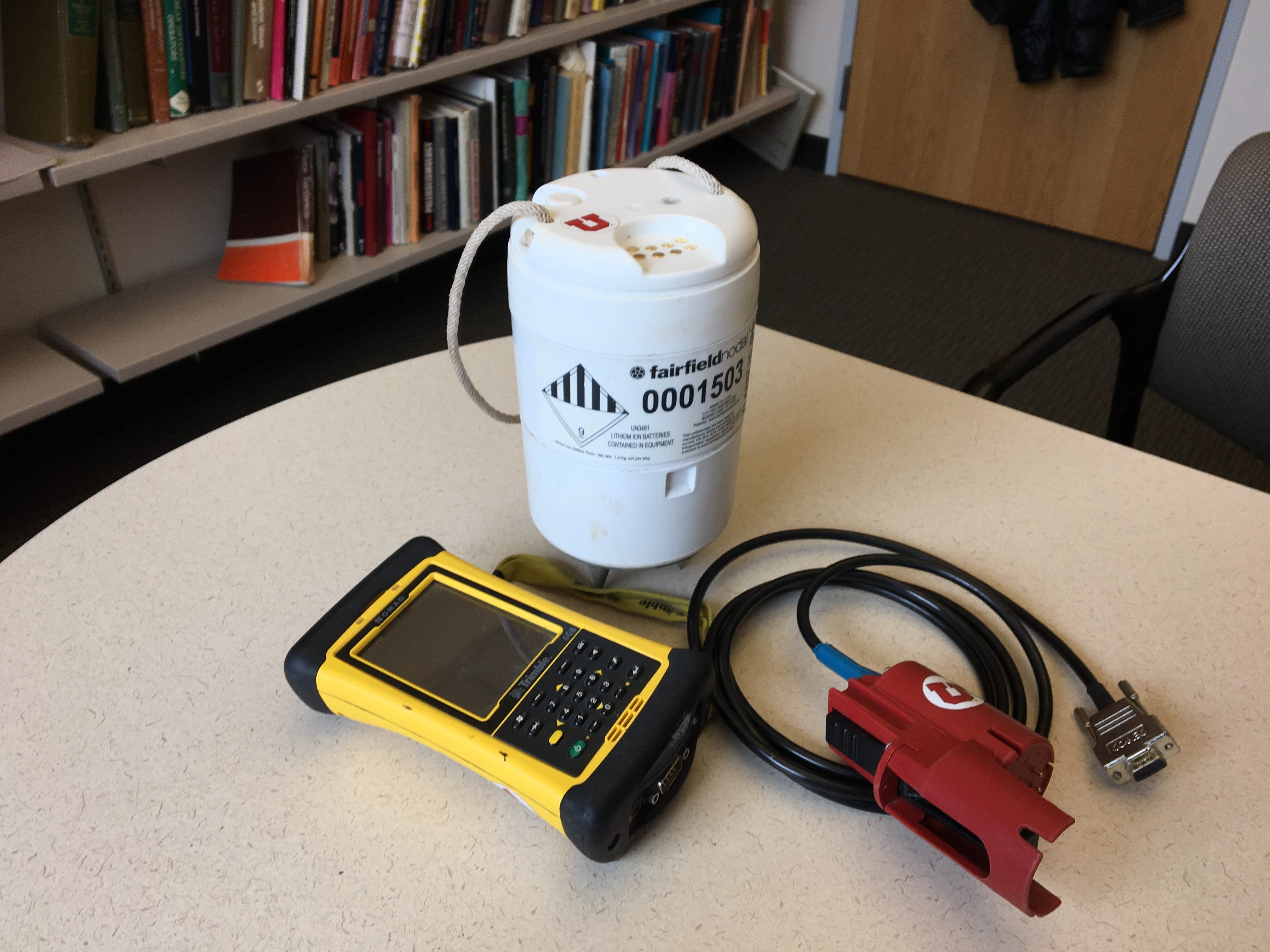
Sin-Mei Wu, a co-author of the study, then used a computer program to identify vibrations at each sensor that were definitely caused by the eruptions. Based on the time of the eruption, picked up by sensors closest to the vent, Wu looked at the time the vibration arrived at sensors further out. Geologists can infer properties of the materials underground based on how long it takes for a vibration to pass through them.
“We can see there’s an area of waves that’s slowed down significantly,” says Lin. “That’s likely because the water actually resists wave propagation, that slows down the waves.” Just how slow the vibration’s waves travel can also help them estimate the volume of water underground. Lin and Wu say it’s about 300,000 cubic meters of water. In comparison, Old Faithful only spurts out about 30 cubic meters during each eruption.

“Maybe because this is a huge reservoir, it produces a constant hydrothermal fluid feeding to the system and producing this eruption every 90 minutes or so,” says Lin. And the team has only scratched the surface. They still don’t know enough about the deeper structures that are part of the nearby Yellowstone supervolcano, and are hoping to image the underlying magma chamber. “That will eventually produce a better idea of what the volcanic hazard is in the area.”
Lin notes that this study really only tells us about Old Faithful. We have no idea if it operates like other geysers because we haven’t been able to image them either. “We’re planning to put this kind of array at other hydrothermal systems,” he says. Norris Geyser Basin, also in Yellowstone, has been growing hotter and hotter, so this technology could help the National Park Service determine if the underground structure is changing and whether or not to block off the area in case a hydrothermal explosion is imminent.

The information could also help the Park Service protect structures, including the Old Faithful Inn, finished in 1904. “They tried to dig down to reinforce the base of the structure and at a very shallow depth, they reached very hot hydrothermal fluid,” says Lin. “There’s some concern whether there’s actually active hydrothermal activity right beneath some of the buildings there.”
The team plans to brave the snow and the coyotes again this November to put out another array near a place called Geyser Hill. The small sensors are a powerful tool for unlocking the geologic mysteries of some of nature’s greatest shows.
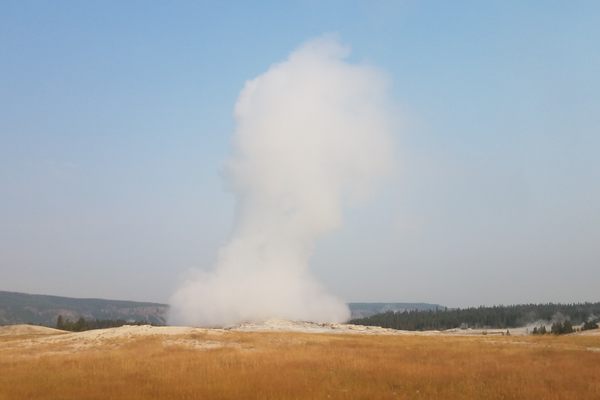
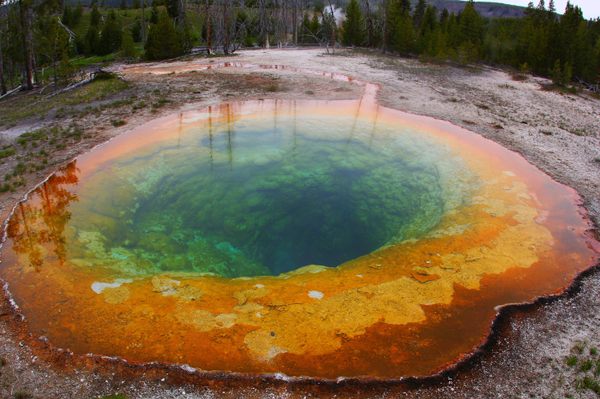


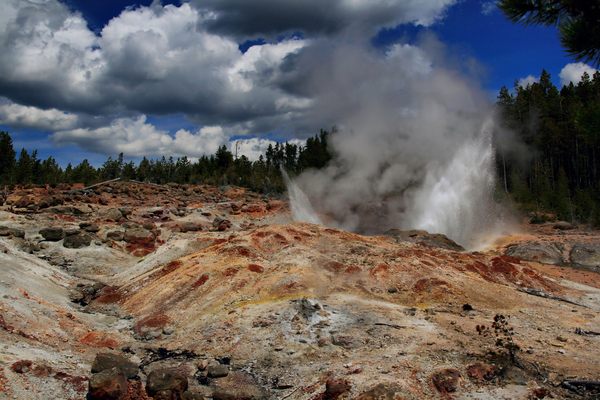

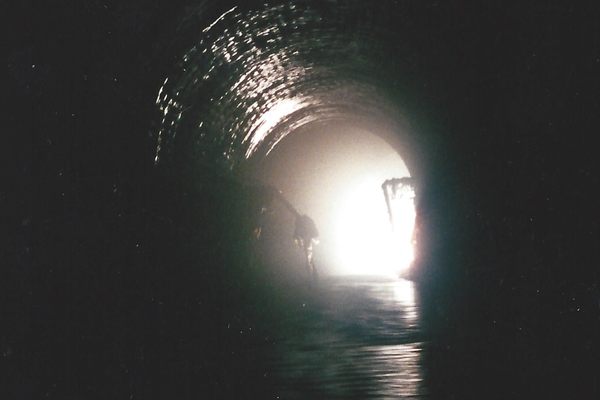



















Follow us on Twitter to get the latest on the world's hidden wonders.
Like us on Facebook to get the latest on the world's hidden wonders.
Follow us on Twitter Like us on Facebook